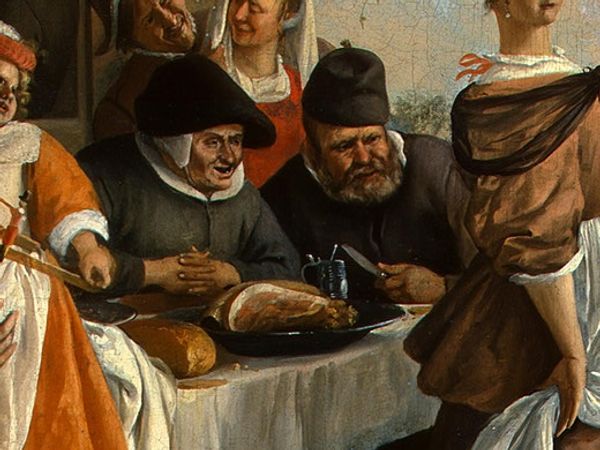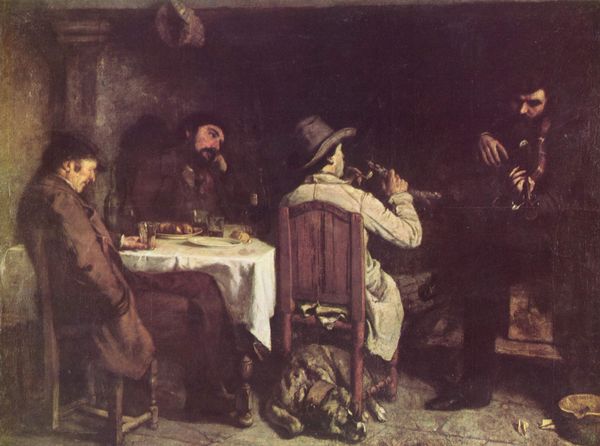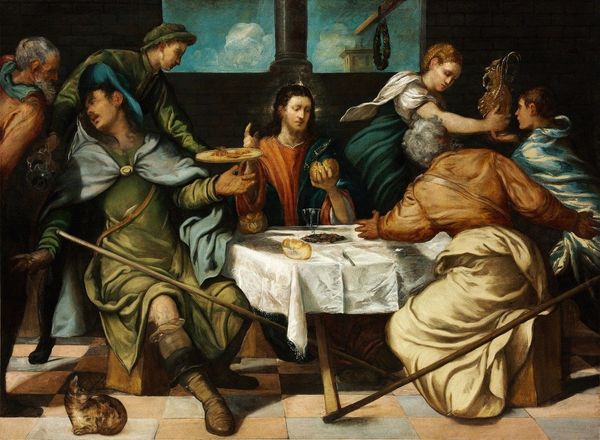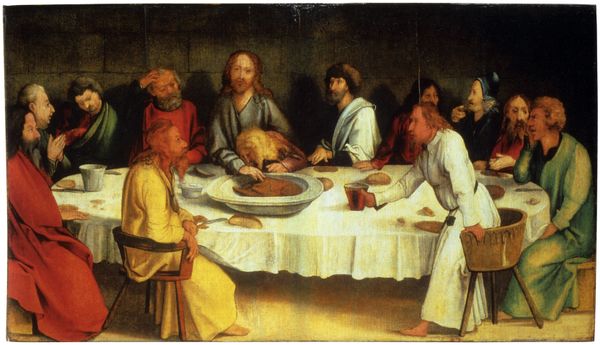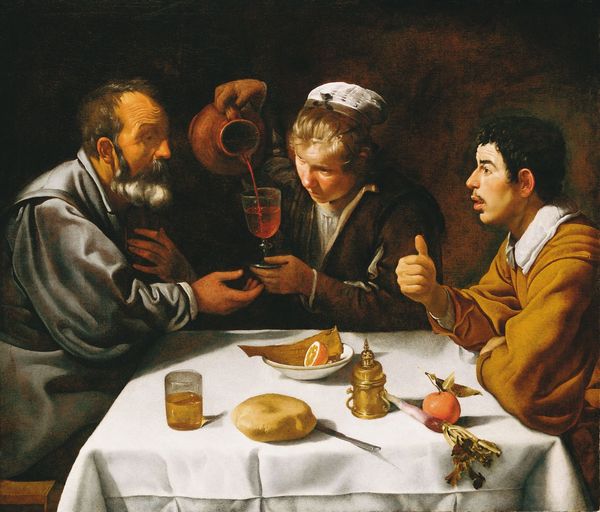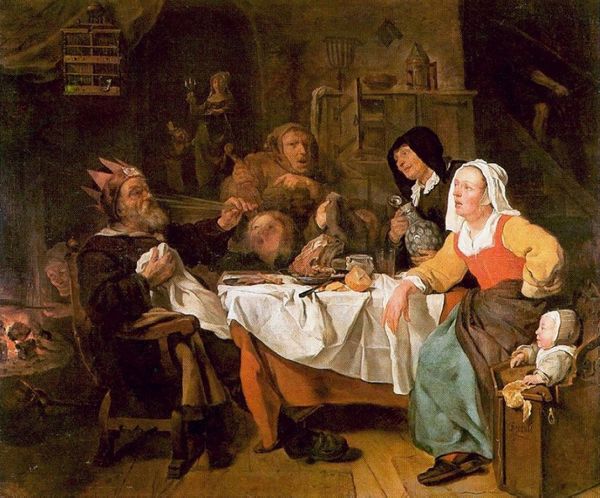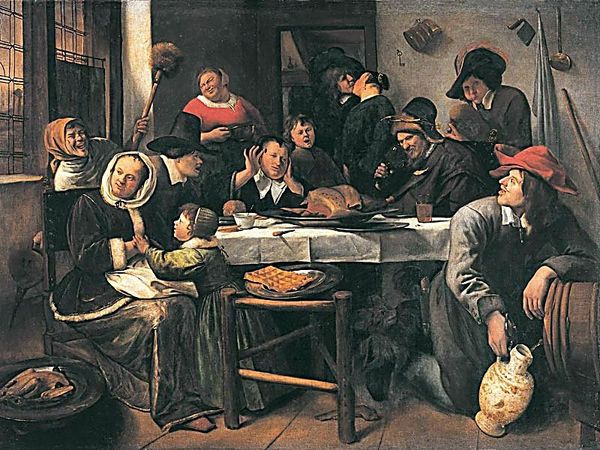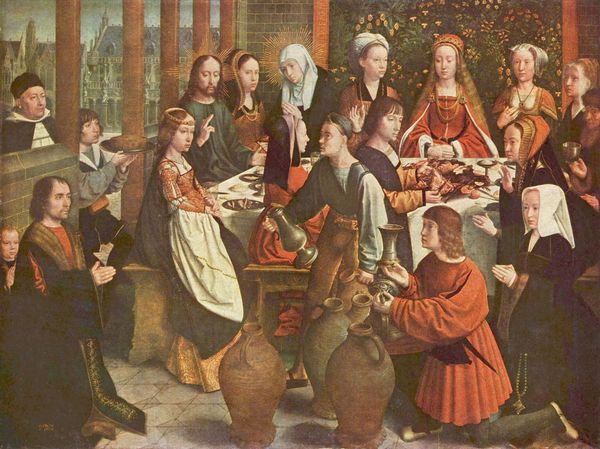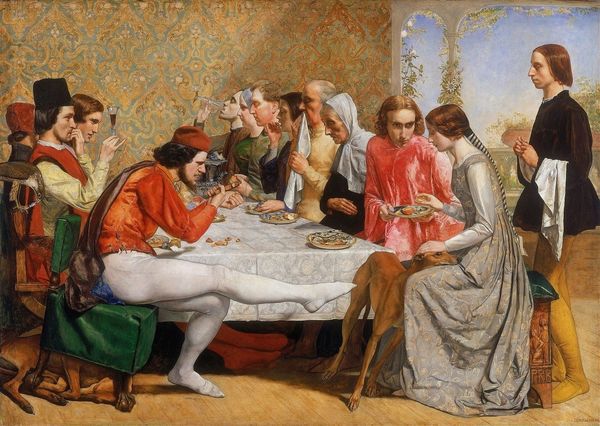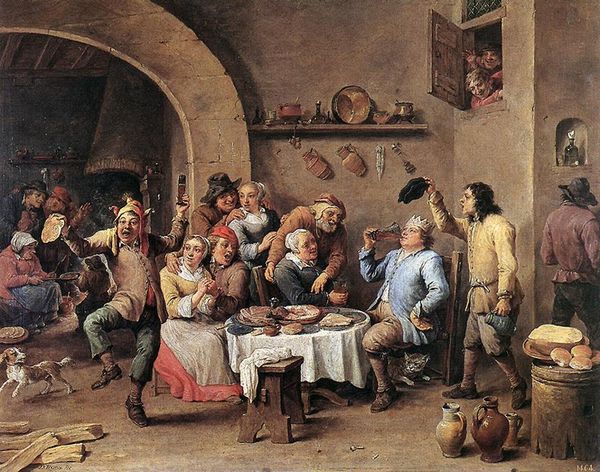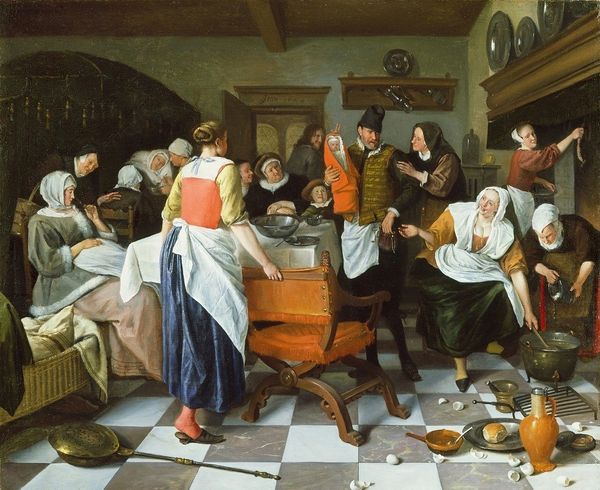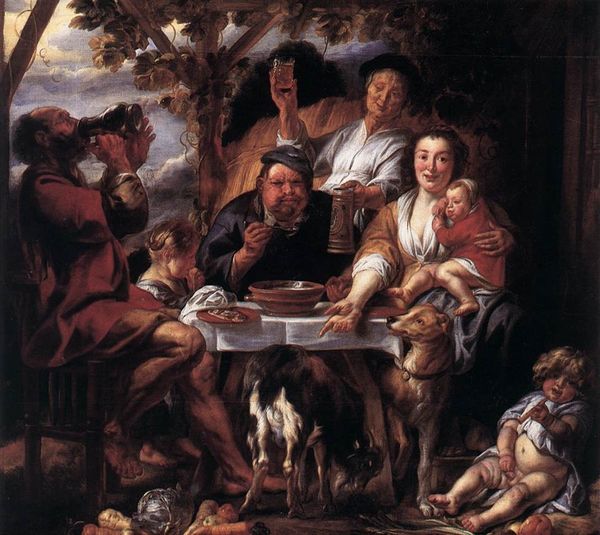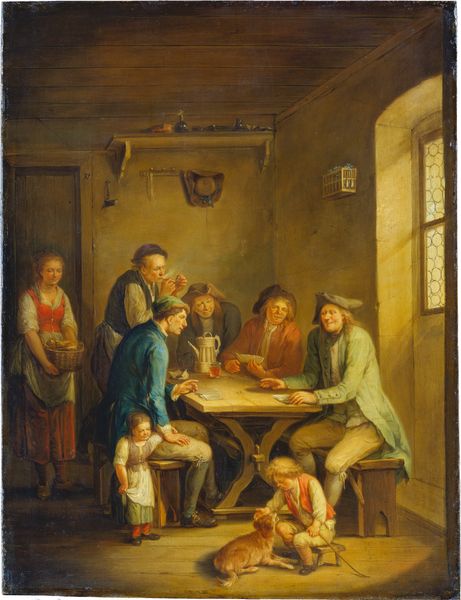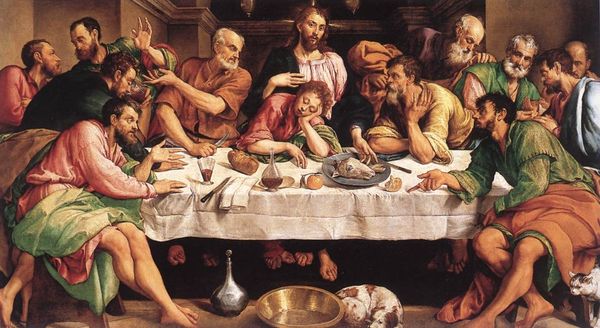
panel, painting, oil-paint
#
portrait
#
panel
#
narrative-art
#
painting
#
oil-paint
#
figuration
#
jesus-christ
#
christianity
#
genre-painting
#
italian-renaissance
#
early-renaissance
#
christ
Dimensions: 40.5 x 61 cm
Copyright: Public domain
Editor: Here we have Dirk Bouts’s “Christ in the House of Simon,” painted around 1445. It’s an oil on panel work, and the composition strikes me as particularly staged and...precise, somehow. What stands out to you when you view this piece? Curator: What I find most interesting is the very construction of this image, its making. The materials - oil paint, applied to wood panel - were relatively new technologies at the time, weren't they? They allowed for the incredible detail, the almost hyper-realistic textures of the clothing and faces. But this realism is deployed in service of a carefully constructed narrative, a narrative ultimately about power. Consider how the materiality of the scene--the actual objects being consumed, like fish--symbolize and reinforce social hierarchies. Editor: Social hierarchies? Could you elaborate on that a bit? Curator: Certainly. Think about who is eating, who is serving, who is penitent at the feet of Christ. This painting depicts not just a religious scene but also a scene of labor. Someone prepared the fish; someone laid the table. We can also see the implied wealth necessary to commission such a work of art to begin with. Even the use of precious pigments like ultramarine in clothing signifies the affluence of the patrons and their access to resources and skilled labour. The artistry here lies in how these very tangible realities are interwoven with religious allegory. What kind of impression does this process and use of materials leave on you? Editor: I never really thought about it in terms of labor before, but now I see the layers of production embedded within the image, all the way back to obtaining and processing the materials used to even make the piece! Curator: Exactly. By attending to the materials, labor, and the means of its creation, we see the art of Bouts through the lens of social structures of the era. It moves the spiritual into something more tactile and understandable. Editor: That really reframes my understanding, making it more about the here-and-now of its creation rather than just the story it's depicting. Thanks!
Comments
No comments
Be the first to comment and join the conversation on the ultimate creative platform.
